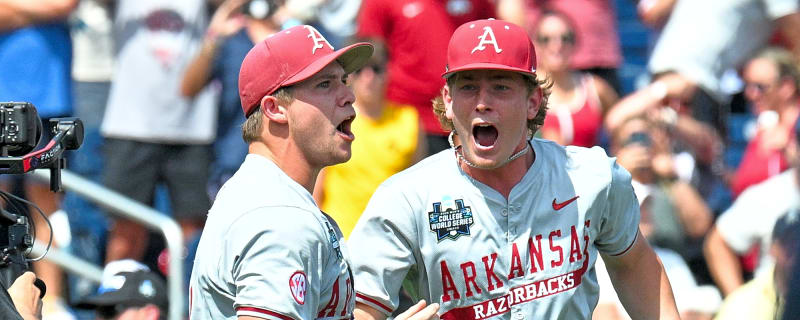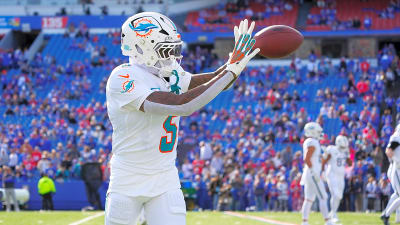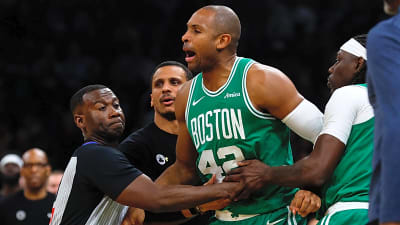- Home
- Quizzes
- My Quiz Activity
- Newsletters
- MY FAVORITES
- Add Sports/Teams
- SPORTS
-
NFL
- NFL Home
- Arizona Cardinals
- Atlanta Falcons
- Baltimore Ravens
- Buffalo Bills
- Carolina Panthers
- Chicago Bears
- Cincinnati Bengals
- Cleveland Browns
- Dallas Cowboys
- Denver Broncos
- Detroit Lions
- Green Bay Packers
- Houston Texans
- Indianapolis Colts
- Jacksonville Jaguars
- Kansas City Chiefs
- Las Vegas Raiders
- Los Angeles Chargers
- Los Angeles Rams
- Miami Dolphins
- Minnesota Vikings
- New England Patriots
- New Orleans Saints
- New York Jets
- New York Giants
- Philadelphia Eagles
- Pittsburgh Steelers
- San Francisco 49ers
- Seattle Seahawks
- Tampa Bay Buccaneers
- Tennessee Titans
- Washington Commanders
-
MLB
- MLB Home
- Athletics
- Arizona Diamondbacks
- Atlanta Braves
- Baltimore Orioles
- Boston Red Sox
- Chicago White Sox
- Chicago Cubs
- Cincinnati Reds
- Cleveland Guardians
- Colorado Rockies
- Detroit Tigers
- Houston Astros
- Kansas City Royals
- Los Angeles Angels
- Los Angeles Dodgers
- Miami Marlins
- Milwaukee Brewers
- Minnesota Twins
- New York Yankees
- New York Mets
- Philadelphia Phillies
- Pittsburgh Pirates
- San Diego Padres
- San Francisco Giants
- Seattle Mariners
- St. Louis Cardinals
- Tampa Bay Rays
- Texas Rangers
- Toronto Blue Jays
- Washington Nationals
-
NBA
- NBA Home
- Atlanta Hawks
- Boston Celtics
- Brooklyn Nets
- Charlotte Hornets
- Chicago Bulls
- Cleveland Cavaliers
- Dallas Mavericks
- Denver Nuggets
- Detroit Pistons
- Golden State Warriors
- Houston Rockets
- Indiana Pacers
- Los Angeles Clippers
- Los Angeles Lakers
- Memphis Grizzlies
- Miami Heat
- Milwaukee Bucks
- Minnesota Timberwolves
- New Orleans Pelicans
- New York Knicks
- Oklahoma City Thunder
- Orlando Magic
- Philadelphia 76ers
- Phoenix Suns
- Portland Trail Blazers
- Sacramento Kings
- San Antonio Spurs
- Toronto Raptors
- Utah Jazz
- Washington Wizards
-
NHL
- NHL Home
- Anaheim Ducks
- Boston Bruins
- Buffalo Sabres
- Calgary Flames
- Carolina Hurricanes
- Chicago Blackhawks
- Colorado Avalanche
- Columbus Blue Jackets
- Dallas Stars
- Detroit Red Wings
- Edmonton Oilers
- Florida Panthers
- Los Angeles Kings
- Minnesota Wild
- Montreal Canadiens
- Nashville Predators
- New Jersey Devils
- New York Islanders
- New York Rangers
- Ottawa Senators
- Philadelphia Flyers
- Pittsburgh Penguins
- San Jose Sharks
- Seattle Kraken
- St. Louis Blues
- Tampa Bay Lightning
- Toronto Maple Leafs
- Utah Mammoth
- Vancouver Canucks
- Vegas Golden Knights
- Washington Capitals
- Winnipeg Jets
- NCAAF
- NCAAM
- Olympics
- Boxing
- Entertainment
- Lifestyle
- Golf
- MMA
- Soccer
- Tennis
- Wrestling
- Sports Betting
- More Sports
- RESOURCES
- My Account
- YB on Facebook
- YB on Twitter
- YB on Flipboard
- Contact Us
- Privacy Policy
- Terms of Service
Razorbacks land first outfield transfer out of portal
Arkansas' transfer class is slowly starting to take shape around the diamond. Missouri State's Zack Stewart announced his commitment on Twitter/X Tuesday morning.
Razorbacks set for gauntlet with second-toughest SEC schedule
There’s no gentle way to put Arkansas' schedule this season into a positive light. The Razorbacks might be staring down the most difficult gauntlet in all of college football for 2025.
Missouri State transfer outfielder Zack Stewart commits to Arkansas baseball

Stewart was the 2023 Missouri Valley Conference freshman of the year.
Tight ends not super flashy, show commitment to Hogs' scheme
Arkansas rebuilt the tight end room through the transfer portal during the winter transfer period with at least one player expected to contribute immediately.
'26 TE commitment Kade Bush plans to enroll early with Arkansas football

Tight end Kade Bush, a 2026 Arkansas football commit, said his official visit to Fayetteville reconfirmed his decision to be a Razorback.
Former Arkansas basketball star Bobby Portis agrees to 3-year deal to remain with Milwaukee Bucks

Bobby Portis has declined his player option for next season and instead agreed to a three-year, $44 million contract to remain with the Milwaukee Bucks.
Position Analysis: Hogs' offensive line has classic Pittman look
Arkansas coach Sam Pittman and protégé Eric Mateos are synonymous with solid offensive line play. There was an obvious shift in protection the final four games compared to the early parts of the regular season in 2024, but the Razorbacks aren't out of the woods yet.
Recruiting Superlatives: Who's Arkansas' best in the 2026 class?
The Razorbacks have led the SEC in commitments and hovered around the top 2025 in the recruiting rankings for much of the cycle. From a sheer numbers standpoint, Arkansas is far ahead of how it traditionally recruits with a balanced class of 4-stars and high-to-midrange 3-star prospects expected to be key depth pieces.
Pryce defends Jamaican title, Nugent runner-up in hurdles 
KINGSTON, Jamaica – Arkansas alum Nickisha Pryce claimed a third consecutive 400m title at the Jamaican National Championships on Sunday while Ackera Nugent finished second in the 100m hurdles.
Phil Steele ranks Razorbacks near SEC bottom in preseason magazine
It's starting to sound like a dull thud every time one of these preseason projections hits the newstands as get to this point every year Phil Steele, the respected college football prognosticator whose annual magazine sets the tone for preseason debates, released his 2025 SEC predictions, and Arkansas landed near the conference’s bottom.
Arkansas recalibrating in-state recruiting in transfer portal era
In the hills Arkansas, high school football has always been more than a game, it's a rite of passage, a source of pride, and, for many, the dream of playing for the Razorbacks.
Geffrard poised for breakout in Razorbacks' defensive line rebuild
The first hint Ian Geffrard might be something special for Arkansas arrived not on a fall Saturday, but in the grind of spring practice. Teammates couldn’t help but notice Geffrard last spring.
Razorbacks claim three titles at Jamaican National Championships 
KINGSTON, Jamaica – Three Razorbacks claimed national titles during the Jamaican National Championships this weekend as Tyrice Taylor won the 800m while Arkansas alums Romaine Beckford and Carey McLeod captured high jump and long jump titles, respectively.
Arkansas native returns after spending freshman season at Oklahoma
Arkansas continues to get commitments out of the portal on the pitching side. Oklahoma transfer Jackson Kircher announced Saturday on Instagram that he committed to the Razorbacks.
Position Analysis: Hogs running backs have plenty proving to do
Arkansas' group of running backs could be the biggest question mark ahead of the 2025 season. There's one potential bell cow in Braylen Russell back for his sophomore season after flip-flopping his decision to enter the transfer portal twice.
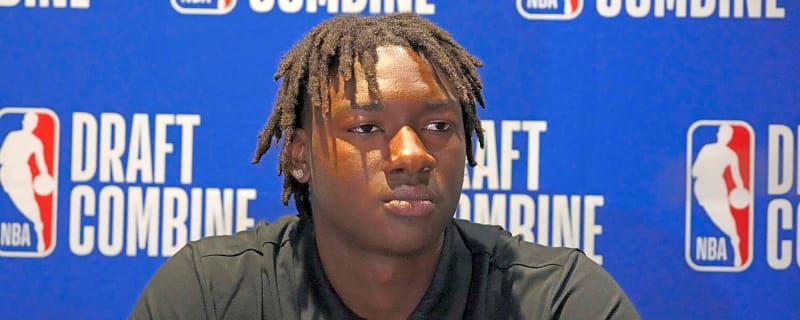
Lakers trade up to draft Klutch Sports client
Rich Paul and Klutch Sports continue to maintain their stronghold in Los Angeles.
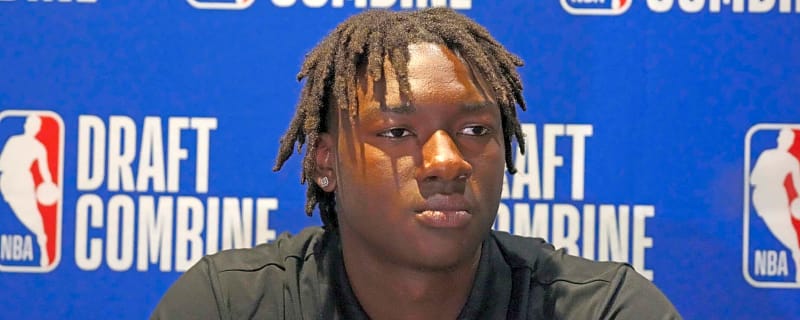
Lakers to acquire No. 36 pick, take Arkansas' Adou Thiero
The Lakers have agreed to acquire the No. 36 overall pick in the draft and used it to select Arkansas forward Adou Thiero, per Shams Charania of ESPN.
John Calipari, 66, Shares Sad News on Wednesday
The Arkansas Razorbacks capped off their first season under head coach John Calipari, finding postseason success in their trial run. Arkansas finished the season with two NCAA Tournament victories, defeating two higher-seeded opponents, Kansas and St.

Arkansas' College World Series curse continues with heartbreaker vs. LSU
The Arkansas Razorbacks' College World Series curse struck them again on Wednesday night.
Arkansas Razorbacks now have massive advantage no other team does in their pursuit of winning first national title in baseball
The Arkansas Razorbacks have one task in mind when it comes to their baseball team right now. Win the whole, dang thing in Omaha, Nebraska. On Monday, they took a huge step towards that goal - thanks mostly to Gage Wood. One of the most impressive outings in college baseball history happened on Monday afternoon.
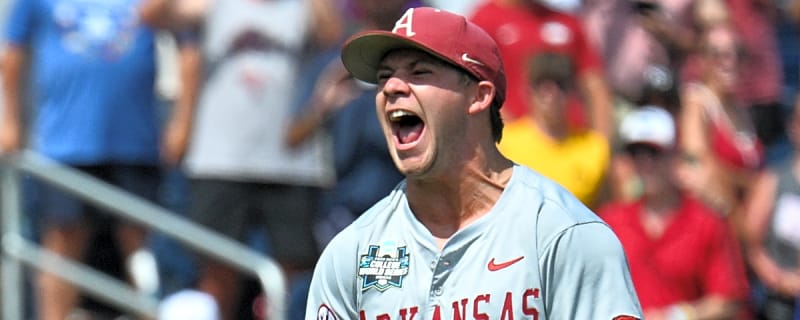
Arkansas pitcher had classy gesture after College World Series no-hitter
Arkansas pitcher Gage Wood led the Razorbacks to a big win on Monday with one of the best performances in Men's College World Series history, and he had a classy gesture toward an opposing player after the game.
Arkansas' Gage Wood places himself into college baseball glory with legendary performance to keep Razorbacks alive in 2025 CWS
Arkansas Razorbacks fireballer Gage Wood just placed himself in college baseball lore. The right-handed pitcher just dominated against the Murray State Racers to keep his team alive in the 2025 Men's College World Series.

10 things to know about historic Gage Wood start at 2025 MCWS
Arkansas Razorbacks pitcher Gage Wood completed arguably the greatest start in men's College World Series history on Monday, throwing a no-hitter with 19 strikeouts in a 3-0 win over Murray State.
Arkansas' Gage Wood had savage six-word reaction to his no-hitter
Arkansas pitcher Gage Wood on Monday threw just the third no-hitter in College World Series history, but he still had one regret after his dominant performance.
Gage Wood goes nuts with 19-strikeout no-hitter in College World Series
Gage Wood is an absolute monster for the Arkansas Razorbacks.
Breaking News
Trending News
My Favorites
Customize Your Newsletter
 +
+
Get the latest news and rumors, customized to your favorite sports and teams. Emailed daily. Always free!
Popular Quizzes
Today's Latest News
PRIVACY POLICY EDITORIAL POLICY CONTACT US
ABOUT YARDBARKER TERMS OF SERVICE
Use of this website (including any and all parts and
components) constitutes your acceptance of these
Terms of Service and Privacy Policy.
This site is for entertainment purposes only.
There is no gambling offered on this site.
Gambling Problem? Call 1-800-Gambler.

 Free Newsletters
Free Newsletters


